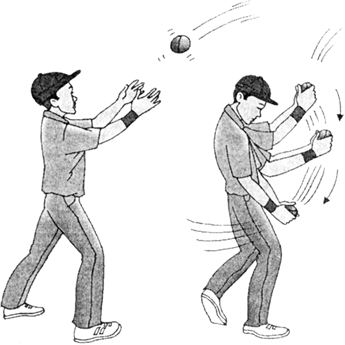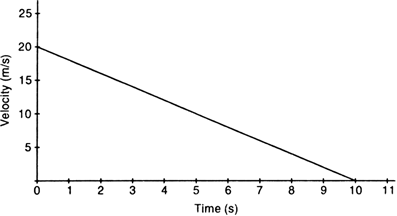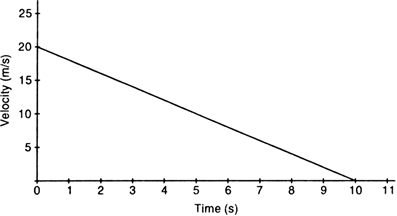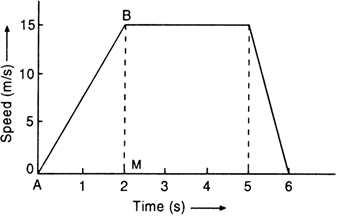Explain how Newton’s second law can be used to define the unit of force. Define the SI unit of force.
Measurement of force from Newton’s second law. Suppose a force F acts on a body of mass m and changes its velocity from u to v in t seconds. Then
According to Newton’s second law, the rate of change of momentum is directly proportional to the applied force, so

where k is a constant. The unit of force is so chosen that k is equal to one. If m = 1, a = 1 and F = 1, then

So a unit force is that force which produces a unit acceleration in a body of unit mass. The S.I. unit of force is newton. One newton is that force which produces an acceleration of 1 m/s2 in a body of mass 1 kg.

Thus, the second law of motion gives us a method to measure force. If the mass and acceleration of a body are known, we can determine the force acting on it.
Give some examples to illustrate Newton’s second law of motion.
(i) A cricket player lowers his hands while catching a ball. By lowering the hands, he increases the time of catching the ball. As a result, the rate of change of momentum decreases and by Newton’s second law, the force exerted on his hands is less. So he is less likely to hurt.
(ii) Chinawares are wrapped in straw paper before packing. The straw paper between the chinawares increases the time of experiencing the jerk during transportation. Hence, they strike against each other with a less force and are less likely to be damaged.
(iii) We are hurt less when we jump on a muddy floor than on a hard floor. When we jump on a muddy floor, the floor is carried in the direction of the jump and the time interval for which force acts is increased. This decreases the rate of change of momentum and hence the force of reaction. Thus, we are hurt less.

A man in a circus show jumps from a height of 10 m and is caught by a net spread below him. The net sags down 2 m due to his impact. Find out the average force exerted by the net on the man to stop his fall. Take the mass of the man to be 60 kg and consider the value of acceleration during his free fall as 10 m/s2.
Initial velocity, u = 0, s = 10 m, v = ?, a = 10 m/s2
The velocity of the man after he has descended 10 m vertically downward is given by

The acceleration produced during the period the net sags down by 2 m is given by

The velocity-time graph of a ball of 20 g moving along a straight line on a long table is given in Fig. 
How much force does the table exert on the ball to bring it to rest?

The negative sign shows that the friction force exerted by the table is opposite to the direction of motion of the ball.
The velocity-time graph of a car is shown in Fig a. The car weighs 1000 kg.
(a) What is the distance travelled by the car in the first two seconds?
(b) What is the braking force applied at the end of 5s to bring the car to a stop within one second?


Fig.9.13.
(b) It is clear from the graph that the velocity at the end of 5 s is 15 m/s. So

